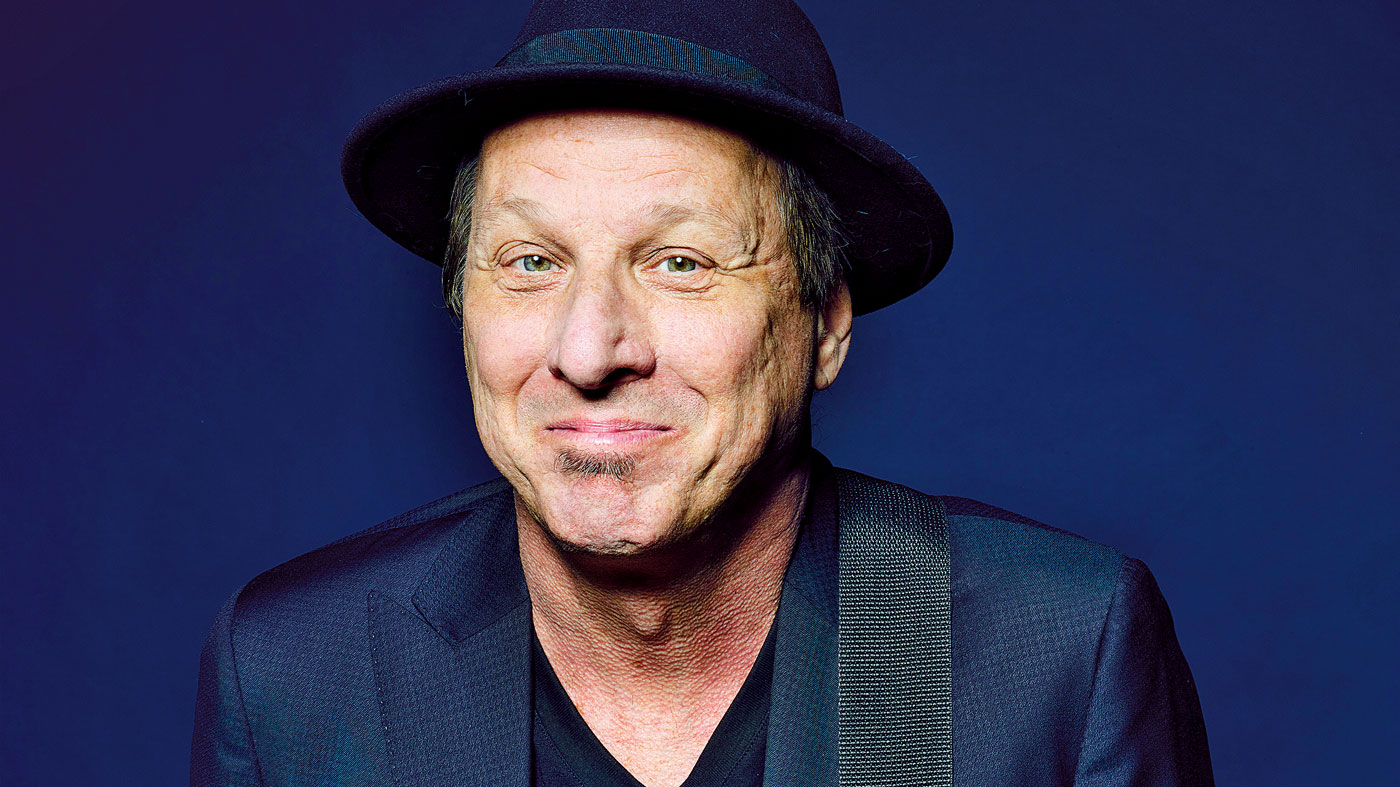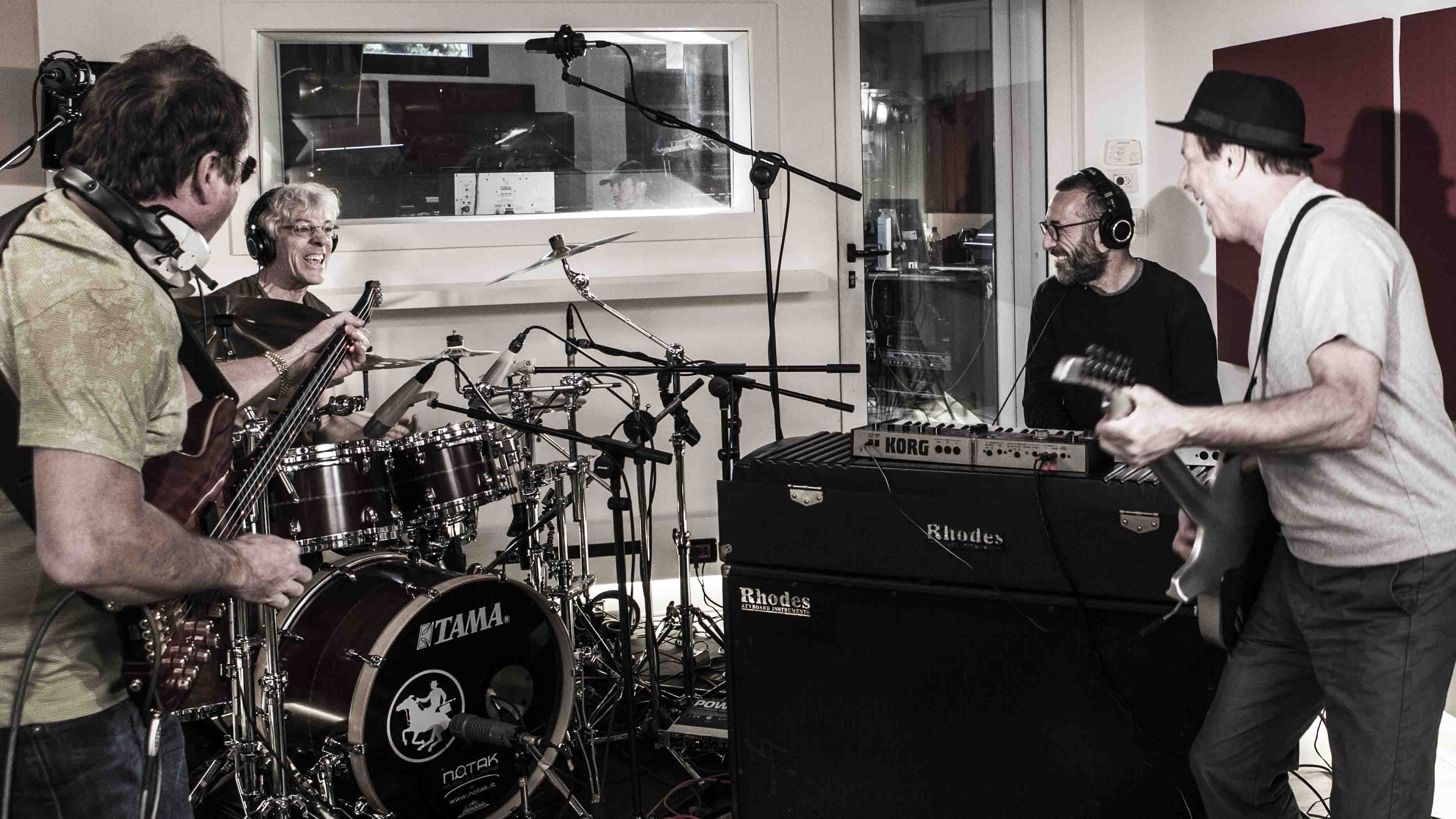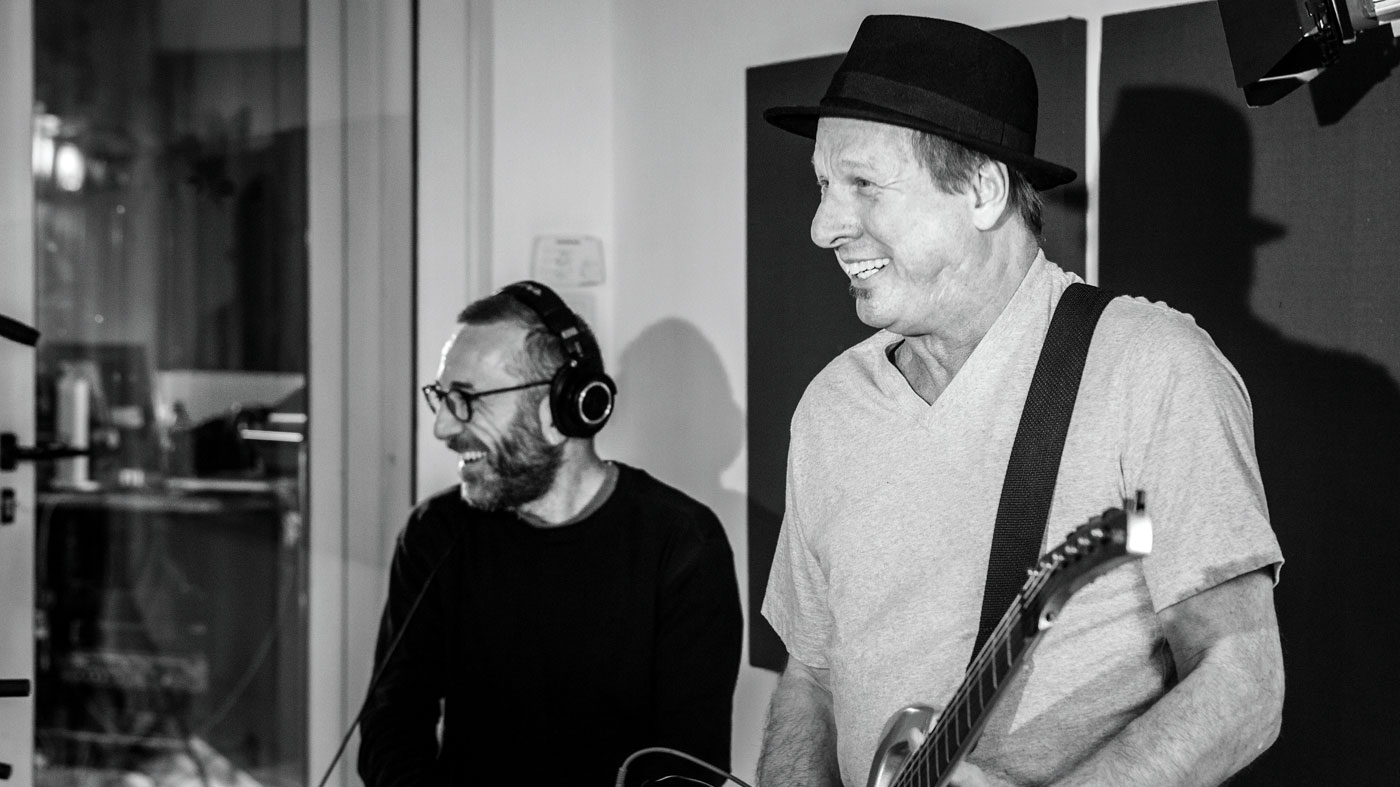Adrian Belew's 11 tips for guitarists
Thoughts from the idiosyncratic six-stringer

After working the wires for Frank Zappa, David Bowie and King Crimson, the Twang Bar King Adrian Belew moves on to a supergroup with ex-Police Stewart Copeland.
Adrian Belew’s latest project is a band called Gizmodrome that features Level 42’s Mark King on bass, The Police’s Stewart Copeland on drums and Vittorio Cosma on keyboards.
“It’s Stewart’s material he’s been writing for 10 years with Vittorio, the keyboard player,” he tells us. “What they need from me is just to pepper it with lots of sounds and some smashing good guitar solos. Stewart is the storyteller and then Mark and I blend our voices together and give you a perfectly sung chorus!”
Famous for the ability to conjure up the sounds of anything from wild animals to heavy machinery on his guitar, Adrian has developed unique talents that have seen him work with some of music’s most demanding artists.
1. First, try to find a unique voice
“I think I began to develop something in the middle 70s, after I had kind of mastered the sound of a lot of different types of styles. I could play like Chet Atkins, I could play like some blues players, I could play like Hendrix or Jeff Beck - a little bit. I had dabbled in a lot of different things. I knew I could mimic all those styles, but what was there left for me? Every time I would play a stock lick, I would try to substitute something for it, so quickly I found the one thing I liked to do that no-one else seemed to be doing was making sounds.”
2. Don’t be afraid to make a noise!
I’d be playing a guitar solo in a bar band somewhere and at the top of the solo I’d put in some seagulls or I’d throw in a car horn
“I’d be playing a guitar solo in a bar band somewhere and at the top of the solo I’d put in some seagulls or I’d throw in a car horn at the end - and that seemed to get a chuckle and everyone liked that. No-one else seemed to be trying to go in that direction, so I was going to try and see what I could do, sound-wise, with the guitar - and that became the beginning of having something different. It was just about the time that I got to be on the world stage; the world of effects began to come alive and I loved all that stuff. I couldn’t wait for the next Fuzz‑Tone to arrive!”
3. A wise animal adapts to the landscape
“David Bowie really was great to me; he mainly just wanted me to go crazy on guitar, whereas in Frank [Zappa]’s band, the idea was play his music the way he’d written it consistently and correctly every night. You’d get a little spotlight where you get to do your own thing, but mostly you were trying to play his music the way he wanted it, and that was good for me. I needed that sort of discipline in my life. “But by the time I got to David’s band I was ready to fly away on my own and that’s what he gave me the wings to do. And then that went straight in to Talking Heads - they needed the same thing.”
Want all the hottest music and gear news, reviews, deals, features and more, direct to your inbox? Sign up here.
4. Think in colour
“[Bowie] always had guitar players who could tear up a good solo, and there were places in his music you could do that, but I felt - in both his band and Talking Heads - that ‘colourist’ was what I would call myself. They often put things on their records they couldn’t replicate live and would turn to me and say, ‘What can you do with this? Can you come up with something?’ and that’s what I would do a lot of times: fill in the gaps where something was supposed to be happening but it wasn’t. With Talking Heads, I just knew exactly what to play. I felt so comfortable with their music, I could have gone on and on adding things. I could have kept going for ever!”
5. Straighten up and fly right
In Crimson I couldn’t stand around between songs and yet the Strat would be badly out of tune because of all the tremolo abuse
“When I first joined King Crimson I was still playing the Strat. Later on, I switched to Mustangs and then back to Strats, and then finally, in 2000s when we had our last round of King Crimson, then I started adopting the Parker Fly - pretty much after the band was over.
“The reason I switched was that it’s just a superior instrument for me. It stays perfectly in tune. It feels perfect for me. I play better. It’s smoother, faster. It’s light. It resonates perfectly. I mean, there are a hundred reasons I can tell you… I think it’s the best guitar for me and I also think it’s the most revolutionary guitar that’s been made since Strats and Les Pauls.”
6. It can be tough on the front line

“Back in the day, when I was doing all the stuff with Crimson, one of my prime concerns was I was the frontman; I had to kind of keep things rolling. I couldn’t stand around between songs and yet the Strat would be badly out of tune by the end of almost every track with the way I play and all the tremolo abuse. I notice that when I see Jimi Hendrix, he had similar problems!
“When you really go crazy with the tremolo arm on a Strat or any of those instruments, it’s hard to keep them in tune. Not so with the Parker Fly, so that relieves me of that problem after about 20 years.”
7. Small certainly can be beautiful
“I don’t use amps any more. Touring around the world with my Power Trio I’ve had to get my gear as small as I can, so it’s a very small setup now. It mainly revolves around the Fractal Audio Axe-Fx. Also, I play through a laptop and a Boss GP-10, all of which is in a four-space rack and that goes into a box.
“On top of that box go my pedals: three different volume pedals, a Liquid Foot MIDI controller and a DigiTech HarmonyMan. I run the guitar straight into a Keeley Compressor, which is the back of the rack and really that’s it…”
8. It’s not just gear; it’s a mobile zoo!
I’m really, really happy with this Axe-Fx system and, yes, I can do pretty much what I want: whale sounds, elephant sounds, mosquitos...
“My setup now weighs 70lbs. It’s got a handle on the top: you roll it through the airport just like you do one of your clothing bags, put it on the belt and you’re done. The more gear you have, the more problems you’re going to have travelling around the world. Not necessarily in the United States, where we keep the tour on the ground, but if you’re going to Lithuania, good luck! I’m really, really happy with this system and, yes, I can do pretty much what I want: whale sounds, elephant sounds, mosquitos, whatever. I’ve got all that and plenty more.”
9. If you’re not in sync, you’re sunk!
“I was using Roland JC-120 Choruses [with King Crimson] then Robert [Fripp] started using the same as he liked the sound of them. We were trying with our interlocking guitar style to have a sound that actually matched in some ways.
“In fact, I remember when we finally went in to the studio to make Discipline [in 1981], we couldn’t get those guitars to be in tune. Then I realised, ‘Wait a minute, we both have our choruses on!’ That stereo chorus. ‘What we should do is take the chorus off, record the tracks and then we can have the engineer put chorus on it…’ And that’s what we did.”
10. Sit back and enjoy the view
“The time I was most in awe of what was happening? I’d say standing on stage at Madison Square Garden with David Bowie. It was pretty eye-opening.
“First of all, it’s a very large place - 18,000 people, I think. It’s very historic. The front two rows as far as you can see from the front of the stage are all people that you recognise because they’re famous. When you play with David Bowie, you’d have Andy Warhol sitting there, you’d have Talking Heads sitting there, you’d have Mick and Bianca [Jagger] sitting there, you’d have Dustin Hoffman…”
11. Cherish the moment
“It’s really kind of a moment where you realise where you’ve come to. From riding in a little broken down Volkswagen one day up 21st Avenue in Nashville and hearing Heroes for the first time and going, ‘Ah God, I love David Bowie - ah, what is that guitar sound?’ and then, you know, 18 months later being on stage and playing Heroes with David Bowie. So that’s the moment of realisation for me where I said, ‘Wow, I can’t believe I’m actually doing this!’”
Gizmodrome’s self-titled debut album is out now on earMUSIC.


